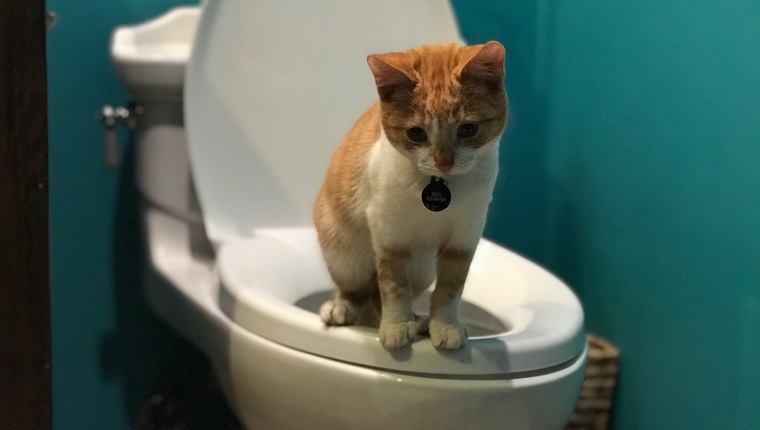Why Flushing Cat Poop Down Your Toilet Isn't a Good Idea - Tips for Safer Disposal
Why Flushing Cat Poop Down Your Toilet Isn't a Good Idea - Tips for Safer Disposal
Blog Article
Here in the next paragraph you can locate more exceptional advice in regards to Don’t flush cat feces down the toilet.

Intro
As feline proprietors, it's important to be mindful of how we get rid of our feline pals' waste. While it may seem convenient to flush pet cat poop down the toilet, this method can have damaging repercussions for both the atmosphere and human wellness.
Environmental Impact
Purging feline poop presents hazardous microorganisms and bloodsuckers right into the water supply, presenting a substantial threat to aquatic communities. These pollutants can adversely affect aquatic life and compromise water high quality.
Health and wellness Risks
In addition to environmental issues, flushing cat waste can also pose health threats to human beings. Feline feces may contain Toxoplasma gondii, a parasite that can create toxoplasmosis-- a potentially severe health problem, especially for expectant women and people with weakened immune systems.
Alternatives to Flushing
Fortunately, there are much safer and extra responsible methods to dispose of feline poop. Take into consideration the adhering to alternatives:
1. Scoop and Dispose in Trash
The most typical technique of taking care of feline poop is to scoop it right into an eco-friendly bag and toss it in the garbage. Be sure to use a dedicated litter scoop and deal with the waste quickly.
2. Use Biodegradable Litter
Opt for biodegradable pet cat clutter made from products such as corn or wheat. These trashes are eco-friendly and can be safely dealt with in the garbage.
3. Bury in the Yard
If you have a yard, take into consideration hiding cat waste in a marked area far from vegetable yards and water sources. Make certain to dig deep adequate to stop contamination of groundwater.
4. Install a Pet Waste Disposal System
Buy a family pet waste disposal system specifically created for pet cat waste. These systems utilize enzymes to break down the waste, decreasing smell and ecological impact.
Final thought
Liable pet ownership prolongs beyond providing food and sanctuary-- it also entails appropriate waste management. By refraining from purging pet cat poop down the commode and choosing different disposal techniques, we can lessen our ecological impact and shield human wellness.
Why Can’t I Flush Cat Poop?
It Spreads a Parasite
Cats are frequently infected with a parasite called toxoplasma gondii. The parasite causes an infection called toxoplasmosis. It is usually harmless to cats. The parasite only uses cat poop as a host for its eggs. Otherwise, the cat’s immune system usually keeps the infection at low enough levels to maintain its own health. But it does not stop the develop of eggs. These eggs are tiny and surprisingly tough. They may survive for a year before they begin to grow. But that’s the problem.
Our wastewater system is not designed to deal with toxoplasmosis eggs. Instead, most eggs will flush from your toilet into sewers and wastewater management plants. After the sewage is treated for many other harmful things in it, it is typically released into local rivers, lakes, or oceans. Here, the toxoplasmosis eggs can find new hosts, including starfish, crabs, otters, and many other wildlife. For many, this is a significant risk to their health. Toxoplasmosis can also end up infecting water sources that are important for agriculture, which means our deer, pigs, and sheep can get infected too.
Is There Risk to Humans?
There can be a risk to human life from flushing cat poop down the toilet. If you do so, the parasites from your cat’s poop can end up in shellfish, game animals, or livestock. If this meat is then served raw or undercooked, the people who eat it can get sick.
In fact, according to the CDC, 40 million people in the United States are infected with toxoplasma gondii. They get it from exposure to infected seafood, or from some kind of cat poop contamination, like drinking from a stream that is contaminated or touching anything that has come into contact with cat poop. That includes just cleaning a cat litter box.
Most people who get infected with these parasites will not develop any symptoms. However, for pregnant women or for those with compromised immune systems, the parasite can cause severe health problems.
How to Handle Cat Poop
The best way to handle cat poop is actually to clean the box more often. The eggs that the parasite sheds will not become active until one to five days after the cat poops. That means that if you clean daily, you’re much less likely to come into direct contact with infectious eggs.
That said, always dispose of cat poop in the garbage and not down the toilet. Wash your hands before and after you clean the litter box, and bring the bag of poop right outside to your garbage bins.
https://trenchlesssolutionsusa.com/why-cant-i-flush-cat-poop/

We had been brought to that write-up on Don’t flush cat feces down the toilet through someone on a different domain. I beg you take a moment to share this blog entry if you enjoyed reading it. Thank you for going through it.
Visit My Web Page Report this page